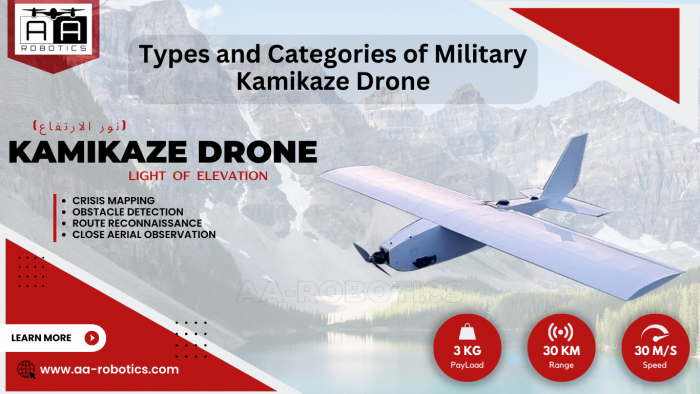In recent years, the complexities of national security have expanded significantly, necessitating innovative solutions to safeguard borders effectively. The advent of AI-powered border security drones marks a pivotal advancement in this domain, providing unparalleled surveillance, efficiency, and responsiveness. This article delves into the transformative impact of border security drones, exploring their technology, applications, benefits, and future potential.
The Evolution of Border Security
Border security has always been a challenging task, requiring constant vigilance over vast and often difficult terrains. Traditional methods relied heavily on human patrols, physical barriers, and stationary surveillance systems. While effective to some extent, these measures are limited by their reach, response time, and the human factor. The integration of advanced technology, especially AI-powered drones, has introduced a new era of border security.
The Technology Behind Border Security Drones
AI-powered border security drones are sophisticated machines equipped with state-of-the-art technology. Here are some of the key components that make them effective:
Autonomous Navigation: Utilizing AI algorithms, these drones can navigate autonomously, covering extensive areas without human intervention. This ensures continuous surveillance even in remote locations.
Advanced Sensors: Equipped with high-resolution cameras, infrared sensors, and thermal imaging, border security drones can detect movement and identify objects day and night, regardless of weather conditions.
Machine Learning: AI enables these drones to analyze data in real-time, distinguishing between normal and suspicious activities. Machine learning algorithms continuously improve the drones' ability to identify potential threats.
Communication Systems: Integrated with advanced communication systems, these drones can relay information to central command centers instantly, allowing for swift decision-making and response.
GPS and Geofencing: GPS technology and geofencing capabilities enable precise tracking and predefined patrol routes, ensuring comprehensive coverage of border areas.

Applications of Border Security Drones
The deployment of border security drones has revolutionized various aspects of national security operations. Some notable applications include:
Surveillance and Monitoring: Continuous aerial surveillance allows for the real-time monitoring of border areas, detecting unauthorized crossings and other suspicious activities. This is particularly useful in vast and rugged terrains where human patrols are less effective.
Search and Rescue Operations: In cases of lost individuals or distressed migrants, drones equipped with thermal imaging can quickly locate and assist rescue operations, potentially saving lives.
Environmental Monitoring: Drones can monitor environmental conditions, such as detecting forest fires, floods, or other natural disasters near border areas. This aids in disaster response and management.
Anti-Smuggling Operations: Border security drones play a crucial role in combating smuggling activities. Their ability to detect and track suspicious vehicles or individuals helps intercept illegal goods and contraband.
Intelligence Gathering: AI-powered drones can gather valuable intelligence, providing insights into potential threats and enhancing overall security strategies.
Benefits of AI-Powered Border Security Drones
The integration of AI-powered drones into border security operations offers numerous benefits, enhancing efficiency, accuracy, and safety. Here are some of the key advantages:
Enhanced Coverage and Reach: Drones can cover vast areas quickly and efficiently, ensuring comprehensive surveillance even in hard-to-reach locations.
Real-Time Data and Analysis: AI enables drones to process data in real-time, providing instant feedback and allowing for prompt decision-making. This is crucial in responding to potential threats swiftly.
Cost-Effectiveness: While the initial investment in drone technology may be high, the long-term cost savings are significant. Drones reduce the need for extensive human patrols and physical infrastructure, lowering operational costs.
Reduced Human Risk: Deploying drones for border security minimizes the risk to human personnel, especially in dangerous or hostile environments. This enhances overall safety and efficiency.
Scalability and Flexibility: AI-powered drones can be easily scaled to cover larger areas or adapted to specific security needs. Their flexibility allows for customized solutions based on the unique requirements of different border regions.
Challenges and Considerations
Despite the numerous benefits, the deployment of border security drones is not without challenges. Addressing these considerations is crucial for the successful integration of this technology:
Privacy Concerns: The use of drones for surveillance raises privacy issues, especially in border areas near populated regions. Ensuring that surveillance activities comply with legal and ethical standards is essential.
Technological Limitations: While AI-powered drones are advanced, they are not infallible. Technical malfunctions, weather conditions, and other factors can affect their performance. Continuous maintenance and upgrades are necessary to ensure reliability.
Legal and Regulatory Frameworks: The deployment of drones must adhere to national and international laws and regulations. Establishing clear guidelines and protocols for their use is crucial to avoid legal complications.
Cybersecurity: As with any technology, AI-powered drones are vulnerable to cyber threats. Implementing robust cybersecurity measures is vital to protect against hacking and unauthorized access.
Public Perception: Gaining public trust and acceptance of drone technology is essential. Transparent communication about the benefits and safeguards in place can help mitigate concerns and build confidence in this technology.
Future Prospects and Innovations
The future of border security drones is promising, with ongoing advancements in AI and drone technology set to enhance their capabilities further. Some potential future developments include:
Improved AI Algorithms: Continued advancements in AI will lead to more sophisticated algorithms, enabling drones to detect and respond to threats with even greater accuracy.
Enhanced Autonomy: Future drones may achieve higher levels of autonomy, reducing the need for human intervention and further improving efficiency.
Integration with Other Technologies: Combining drones with other technologies, such as satellite imagery and ground-based sensors, will create a more comprehensive and multi-layered security system.
Swarm Technology: The development of drone swarms, where multiple drones operate in coordination, can enhance surveillance capabilities and provide more extensive coverage.
Eco-Friendly Designs: Innovations in drone design, such as solar-powered or environmentally sustainable models, can reduce the ecological impact of drone operations.
Conclusion
AI-powered border security drones represent a significant leap forward in the field of national security. Their ability to provide continuous, real-time surveillance, coupled with advanced data analysis, makes them invaluable assets in safeguarding borders. While challenges and considerations remain, the benefits of this technology are undeniable. As advancements continue, border security drones will play an increasingly vital role in ensuring the safety and integrity of national borders, heralding a new era of security and efficiency.
In conclusion, the deployment of border security drones is not just a technological advancement but a strategic imperative in the modern world. By embracing this innovation, nations can enhance their border security measures, respond more effectively to threats, and ultimately ensure the safety and well-being of their citizens. The future of border security is here, and it is flying high with AI-powered drones.
This comprehensive look at AI-powered border security drones highlights their importance in modern national security strategies. With continuous advancements and strategic implementation, these drones promise to revolutionize border security, offering a safer, more efficient, and technologically advanced solution to a complex challenge.
















